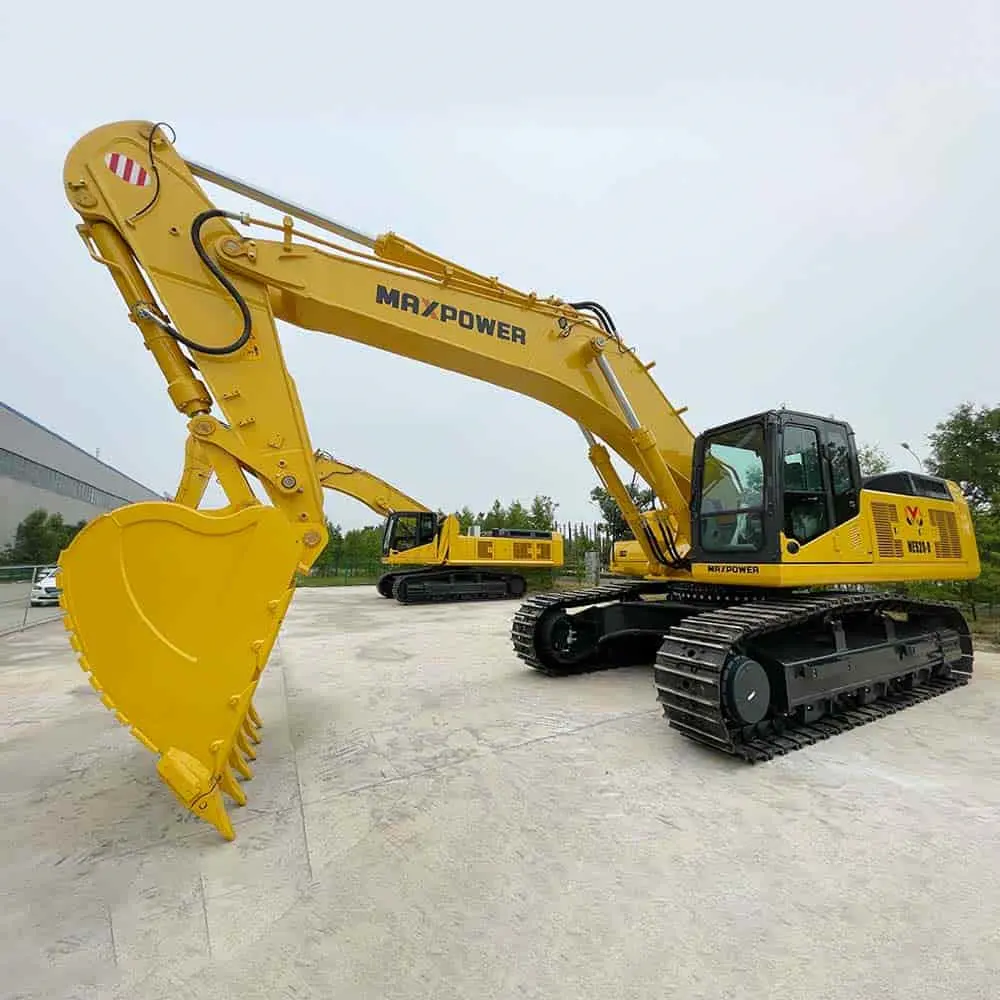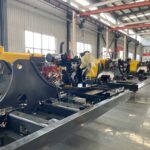Introduction
Excavation is a critical component of numerous construction and infrastructure projects, from residential developments to large-scale civil engineering endeavors. At the heart of these excavation operations are the versatile and powerful machines known as excavators. These remarkable pieces of equipment come in a wide array of configurations, each designed to tackle specific challenges and terrain. In this comprehensive blog post, we will delve into the diverse types of excavators, their unique features, and how they contribute to the success of excavation projects.
Understanding the Basics of Excavators

Excavators are heavy-duty construction machines primarily used to dig, move and load materials such as soil, rock and debris. These machines typically consist of a rotating platform (the “house”), an operator cab, and a boom that supports the digging attachment (called the “bucket”). The combination of a rotating platform and boom articulation allows the excavator to perform a variety of tasks with precision and efficiency. All attachments vary depending on the types of excavators.
The Anatomy of an Excavator
To fully appreciate the diversity of excavator types, it’s essential to understand the key components that make up these machines. The main parts of an excavator include:
Undercarriage: The undercarriage provides the excavator’s mobility, either through wheels or tracks, and is responsible for the machine’s stability and maneuverability.
Superstructure: The superstructure, or “house,” is the rotating platform that houses the engine, hydraulic systems, and operator’s cab.
Boom: The boom is the large, articulated arm that extends from the superstructure and is used to control the digging attachment.
Digging Attachment: The digging attachment, typically referred to as the “bucket,” is the tool at the end of the boom that is used for excavation, loading, and other tasks.
Types of Excavators: Exploring the Diversity
Excavators come in a wide range of sizes, configurations, and specialized designs to meet the diverse needs of construction and excavation projects. Let’s explore the main types of excavators and their unique characteristics.
Crawler Excavators
Crawler excavators, also known as track-type excavators, are the most common and versatile type of excavator. These machines feature a tracked undercarriage that provides excellent stability and traction, making them well-suited for a variety of terrain, including soft, uneven, or slippery surfaces. Crawler excavators are often used in large-scale earthmoving projects, demolition, and heavy-duty construction tasks.
Wheeled Excavators
Wheeled excavators, as the name suggests, are equipped with wheels instead of tracks. These excavators are designed for applications where mobility and maneuverability are of utmost importance, such as urban construction sites or road maintenance projects. Wheeled excavators offer the advantage of faster travel speeds and the ability to move quickly between job sites without the need for a trailer.
Mini Excavators
Mini excavators, also known as compact excavators, are smaller and more maneuverable versions of their larger counterparts. These machines are ideal for confined spaces, tight job sites, and projects that require precision work, such as landscaping, utility work, and residential construction. Mini excavators are often used in areas where larger excavators would be impractical or too cumbersome.
Hydraulic Excavators
Hydraulic excavators are the most common type of excavator, utilizing a hydraulic system to power the boom, arm, and bucket movements. These machines offer excellent precision, power, and versatility, making them suitable for a wide range of excavation tasks. Hydraulic excavators are available in various sizes, from compact models to large, heavy-duty machines.
Backhoe Loaders
Backhoe loaders are a unique type of excavator that combines a front-end loader and a rear-mounted backhoe. These versatile machines are often used in smaller-scale construction projects, utility work, and landscaping, where their ability to perform both loading and excavation tasks is highly valuable.
Specialty Excavators
In addition to the main types of excavators, there are also several specialty models designed for specific applications:
- Long-Reach Excavators: These excavators feature an extended boom and arm, allowing them to reach greater depths or heights, making them ideal for tasks such as demolition, dredging, and slope work.
- Demolition Excavators: Equipped with specialized attachments like hydraulic breakers or shears, demolition excavators are specifically designed for the challenging task of building and structure demolition.
- Amphibious Excavators: Amphibious excavators are designed to operate in both land and water environments, making them suitable for projects that involve working in wetlands, marshes, or other aquatic areas.
Table: types of excavators
| Excavator Type | Key Features | Typical Applications |
|---|---|---|
| Crawler Excavators | – Tracked undercarriage for stability and traction – Suitable for a variety of terrain | – Large-scale earthmoving – Demolition – Heavy-duty construction |
| Wheeled Excavators | – Wheel-based mobility – Faster travel speeds | – Urban construction – Road maintenance – Utility work |
| Mini Excavators | – Compact and maneuverable – Ideal for confined spaces | – Landscaping – Utility work – Residential construction |
| Hydraulic Excavators | – Hydraulic power system – Versatile and precise | – Wide range of excavation tasks |
| Backhoe Loaders | – Combination of front-end loader and rear-mounted backhoe | – Smaller-scale construction – Utility work – Landscaping |
| Long-Reach Excavators | – Extended boom and arm for greater reach | – Demolition – Dredging – Slope work |
| Demolition Excavators | – Specialized attachments for demolition tasks | – Building and structure demolition |
| Amphibious Excavators | – Ability to operate in land and water environments | – Wetland and aquatic projects |
Factors to consider when choosing different types of excavators

When choosing the right excavator for a project, there are several key factors to consider:
Project Requirements: Assess the specific tasks, site conditions, and excavation needs of the project to determine the most suitable excavator type and size.
Jobsite Accessibility: Consider the accessibility of the job site, including the available space, terrain, and any obstacles that may impact the excavator’s maneuverability.
Operator Expertise: Ensure that the operators are trained and experienced in the use of the selected excavator model to ensure safe and efficient operation.
Maintenance and Servicing: Factor in the excavator’s maintenance requirements and the availability of authorized service centers to ensure optimal performance and longevity.
Cost and Efficiency: Evaluate the overall cost of ownership, including purchase or rental, fuel consumption, and operational efficiency to determine the most cost-effective solution.
Conclusion: types of excavators
Excavators are the backbone of countless construction and infrastructure projects, playing a vital role in the success of these jobs. By understanding the types of excavators and their different capabilities, industry professionals can make informed decisions, unlock superior digging capabilities, and deliver superior results. Whether it’s large earthworks, delicate demolition tasks, or specialized water operations, the right excavator can play a vital role in unlocking the full potential of any excavation challenge.
FAQs
Q: What are the main differences between crawler excavators and wheeled excavators?
A: Crawler excavators, equipped with tracks or crawlers, offer better stability and traction, making them suitable for uneven terrain and heavy-duty digging. Wheeled excavators, on the other hand, provide greater mobility and maneuverability, ideal for projects that require frequent relocation or navigating urban environments.
Q: How do mini excavators differ from standard-sized excavators?
A: Mini excavators, also known as compact excavators, are smaller in size and lighter in weight compared to standard-sized excavators. They are designed to access tight spaces and navigate confined areas, making them ideal for residential construction, landscaping, and utility work.
Q: What factors should I consider when choosing an excavator for a specific project?
A: When selecting an excavator for a project, it’s essential to consider factors such as the required digging depth and reach, the type of soil or material to be excavated, the available working space, and the project’s timeline and budget. Evaluating these factors will help you choose the most suitable excavator for the job.
Q: Are there excavator attachments available for specialized tasks?
A: Yes, there is a wide range of excavator attachments available for specialized tasks, including hydraulic hammers for breaking concrete or rock, grapples for handling debris, augers for drilling holes, and tilt buckets for precise grading and trenching. Using the right attachments can enhance the versatility and efficiency of your excavator for specific project requirements.
Q: What are the differences in prices of different types of excavators?
A: The prices of different types of excavators vary depending on several factors, including size, brand, model, age, condition, and included features or attachments. Generally, larger excavators such as crawler excavators tend to have higher upfront costs due to their size and capabilities. Compact excavators or mini excavators, on the other hand, are typically more affordable, making them a popular choice for smaller projects or tight budgets. Additionally, the availability of used excavators can also impact pricing, with older models often being more budget-friendly than newer ones.







-150x150.webp)
